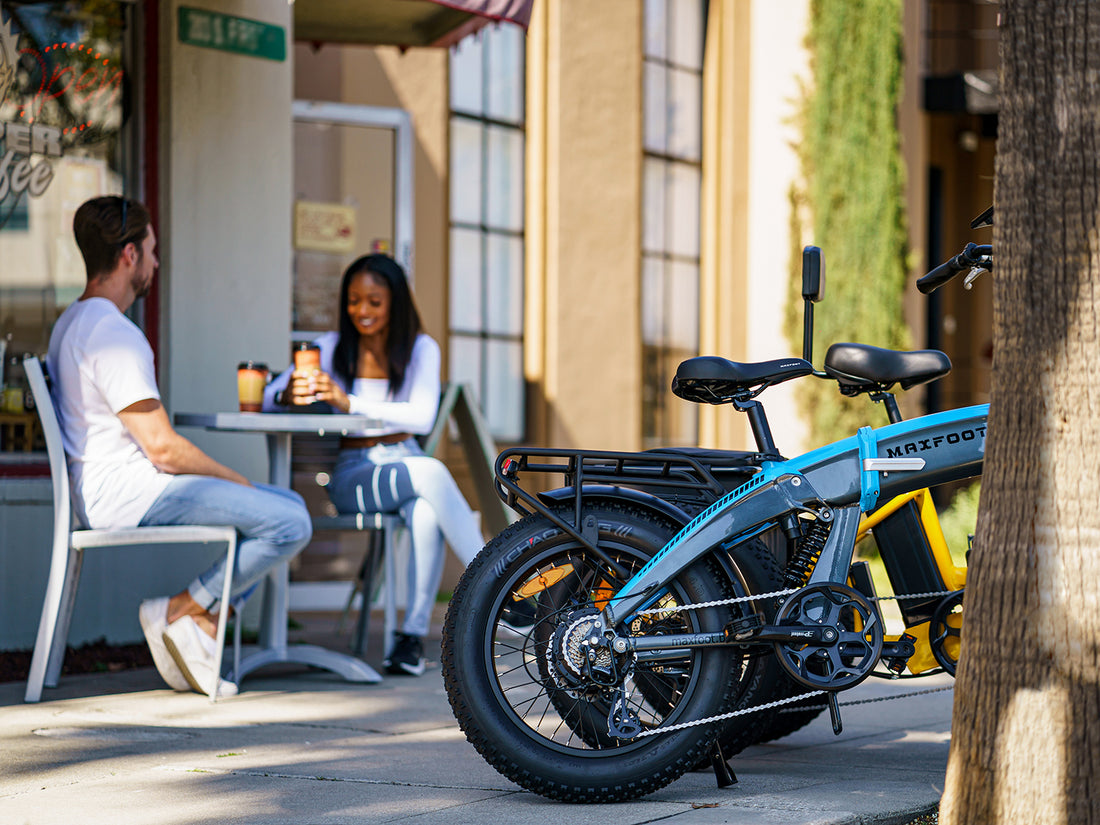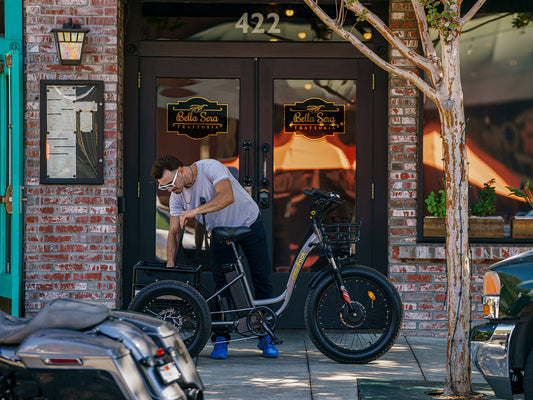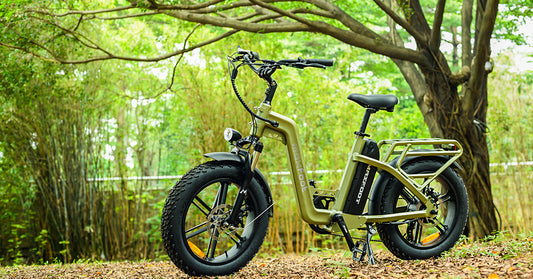It might be fascinating and a little intimidating to navigate the world of electric-powered personal mobility. As technology develops, customers have a wide range of options available to them, each with special features and advantages suited to a certain need. Electric trikes and electric bikes are key subjects in this argument. Both are fantastic examples of how cutting-edge engineering can transform transportation. They provide a contemporary touch to conventional cycling and are effective and ecologically beneficial.
There are however differences between the two, and it is important to understand them. They cater to various interests and lifestyles even though they both attempt to provide an alternate form of transportation. What remains is to ask which one best fit you. In this in-depth review, we will examine the characteristics of the Maxfoot MF-30 electric trike and the MF-17/MF-18 electric bike, breaking down their features to aid in your decision-making.
MF-17/MF-18 Electric Bike: Features and Highlights

Battery and Range
The MF-30 is equipped with a Samsung 48V 17.5AH Lithium Battery, which gives riders the ability to go between 50 and 65+ miles with PAS 1. This range is outstanding, making it suitable for prolonged commuting or leisure rides.
Motor and Power
The MF-30 has a 750W Brushless Bafang Geared Hub Motor, which ensures a steady power output in addition to smooth acceleration. This is combined with a Variable Speed Control 1/2 Twist Throttle, which provides riders with simple modifications to the vehicle's speed.
Construction and Design
The MF-30's frame is made up of two different kinds of aluminium alloys, which work together to maximize both its strength and its flexibility. In the front of the frame, 6061 aluminium alloy is used, while 7A19 aluminium alloy is used in the construction of the rear. This combination creates a lightweight construction that is both durable and very lightweight.
Load Capacity
The MF-30 features a substantial load capacity, which is recognized as one of its primary advantages. It is possible to carry up to 350 pounds on the trike itself, and an extra 100 pounds may be carried on the rear rack.
MF-17/MF-18 Electric Bike: Features and Highlights

Battery and Range
The MF-17/18 makes use of a 48V 13AH Lithium Battery, which results in a range of 45-55 miles when used with PAS 1. This is excellent for both journeys on a daily basis and leisure pursuits.
Motor and Power
The MF-17/18, much like the MF-30, is equipped with a 750W Brushless Geared Hub Motor, which guarantees dependable performance. The familiar Variable Speed Control 1/2 Twist Throttle is used for easy access to the available speed settings.
Construction and Design
The 6061 aluminium alloy is used in the construction of the whole frame of the MF-17/18. This design choice pays attention to the performance of being lightweight while also giving priority to its durability.
Load Capacity
The MF-17/18 is constructed to withstand weights of up to 300 lbs., making it robust enough for the majority of riders in addition to some extra baggage.
Electric Trike vs. Electric Bike: Which is Right for You?

The decision between an electric trike and an electric bike often comes down to the rider's requirements, tastes, and the area they'll be using it in the most consider this more extensive review that is provided below as a means to aid you in making your decision:
Stability vs. Manoeuvrability
The number of wheels and the inherent stability this affords makes the distinction between a tricycle and a bike one of the most notable. With its three wheels, the MF-30 electric tricycle offers more stability. This makes it a fantastic option for riders who could have balance issues, senior users, or those who often carry heavier objects or go on shopping excursions. In contrast, it might be argued that two-wheeled electric bikes such as the MF-17/18 provide enhanced manoeuvrability. This agility is especially useful in metropolitan settings where negotiating traffic, sharp turns, or crowded bike lanes is a regular need.
Load Capacity
Load-bearing capability is an additional essential component to consider. The MF-30 trike is a great option for individuals with heavy-duty needs, whether it be moving products or supporting extra equipment since it can hold up to 450 pounds combined (350 lbs on the trike and an additional 100 lbs on the rear rack). In comparison, the MF-17/18 bike's 300 lb weight capability is perfectly suited for regular commuting and modest transit requirements.
Physical Footprint
The choice is often constrained by available space. Electric tricycles inherently possess a larger physical presence, which might provide challenges for those facing limitations in terms of storage capacity or restricted riding paths. Because they are more streamlined, electric bikes may be transported via public transportation and stored in smaller locations with ease.
Battery Life and Range
If you prioritize lengthy journeys or infrequent charging, the MF-30's increased range (50-65+ miles with PAS 1) beats the MF-17/18's range of 45-55 miles. However, both provide significant distances that satisfy the everyday requirements of the majority of users.
Terrain and Environment
Take into consideration the areas of the road map where you will spend most of your time riding your bike. The MF-30 can manage a range of terrains and is less prone to topple over on uneven ground due to its wider wheelbase and stability. The MF-17/18 bike, on the other hand, is built for quick, agile movements and is appropriate for both urban environments and off-road excursions thanks to its DURABLE 26" x 4.0" Tire.
Aesthetic and Lifestyle Fit
Finally, the decision may sometimes come down to personal taste and how you want to use your electric trike or bike on a daily basis. Some riders Favor the contemporary, sleek appearance of bikes, while others value the distinctive and striking design of trikes.

Conclusion
The decision about whether to choose for an electric tricycle or an electric bike should be determined by the specific needs and personal preferences of the individual. The MF-30 trike is a fantastic option for you if you choose stability, improved load capacity, and a longer range in your transportation vehicle. On the other hand, if you place a higher value on maneuverability, want a frame material that is consistent, and do not need the additional weight capacity, the MF-17/18 electric bikes could be a better fit for you. If you take the time to assess your requirements, you should be able to locate the ideal electric vehicle for your circumstances.




